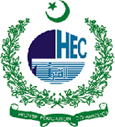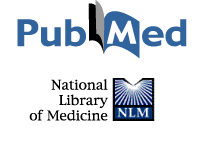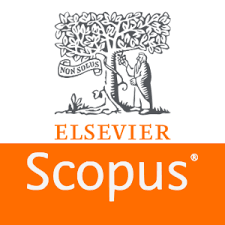COMPARATIVE CROSS-SECTIONAL STUDY OF BUCCOLINGUAL INCLINATION OF PERMANENT FIRST MOLAR IN DIFFERENT VERTICAL FACIAL PATTERNS IN A SAMPLE OF PAKISTANI POPULATION
DOI:
https://doi.org/10.55519/JAMC-01-13437Keywords:
molar inclination, third order bend, buccal corridor, vertical facial type, sagittal skeletal pattern, lateral cephalogram.Abstract
Background: Appropriate buccolingual inclination of posterior teeth and most favorable transverse width of maxillary arch are necessary to improve smile esthetics. The variability of buccolingual molar inclination in orthodontic literature, mainly in relation to vertical growth pattern of the face (Hyperdivergent, Normodivergent and Hypodivergent) is challenging for the orthodontist in choosing the treatment approach for addressing the problem in specific patients. Hence, the focus of this research was comparative assessment of buccolingual molar inclination in various vertical facial growth patterns. Methods: After obtaining ethical approval and informed consent, pre-treatment lateral cephalograms were taken to analyze vertical and sagittal craniofacial characteristics of orthodontic patients at Sharif Medical and Dental College, Lahore. The inclination of permanent first molars was measured on dental casts of orthodontic patients, by marking a perpendicular line to the occlusal table of first molar and a perpendicular line from the base of the cast. Angle formed between these lines was measured by protractor for all quadrants. Results: Seventy-five orthodontic patients were included in this cross-sectional study, where 44% were male and 56% were female. The frequency of normodivergent patients was 34.6%, hypodivergent was 34.6% and hyperdivergent was 30.6%. There was insignificant gender difference statistically in terms of buccolingual inclination of molars by applying independent t-test. The comparison of inter-study group (three groups) means of continuous variable was carried out with analysis of variance (ANOVA). There was significant difference in intergroup comparison based on Levene statistics (p<0.05). The statistical difference for buccolingual inclination of maxillary and mandibular first molar between groups based on Levene statistics and F value was significant (p=0.000 for all). Multiple comparison by Games-Howell Post-Hoc test was done for intergroup comparison after verifying significant difference by Levene statistic (p<0.05). Conclusion: In vertical growth pattern, the first molar teeth have a higher buccal inclination relative to horizontal or normal growth pattern. There was insignificant statistical difference between both genders in terms of buccolingual molar inclination.
References
1. Christou T, Betlej A, Aswad N, Ogdon D, Kau CH. Clinical effectiveness of orthodontic treatment on smile esthetics: a systematic review. Clin Cosmet Investig Dent 2019;11:89–101.
2. Pisulkar SK, Agrawal R, Belkhode V, Nimonkar S, Borle A, Godbole SR. Perception of buccal corridor space on smile aesthetics among specialty dentist and layperson. J Int Soc Prev Community Dent. 2019;9(5):499–504.
3. Frush JP, Fisher RD. The dynesthetic interpretation of the dentogenic concept. J Prosthet Dent 1958;8(4):558–81.
4. Yang B, Chung CH. Buccolingual inclination of molars in untreated children and adults: A cone beam computed tomography study. Angle Orthod 2019;89(1):87–92.
5. Creekmore TD, Kunik RL. Straight wire: the next generation. Am J Orthod Dentofacial Orthop 1993;104(1):8–20.
6. Nouri M, Abdi AH, Farzan A, Mokhtarpour A, Baghban AA. Measurement of the buccolingual inclination of teeth: Manual technique vs 3-dimensional software. Am J Orthod Dentofacial Orthop 2014;146(4):522–9.
7. Andrews LF. Six keys to normal occlusion. Am J Orthod 1972;62(3):296–309.
8. Kantharaju VH, Shivaprakash G, Shamnur N. The relationship between posttreatment smile esthetics and the ABO objective grading system: class I extraction versus non-extraction cases. Turk J Orthod 2021;34(1):39–45.
9. Beugre-Kouassi AM, Koffi BE, Beugre JB. Dental inclination and thickness of the alveolar bone around incisors and molars according to the vertical facial type. Orthod J Nepal 2020;10(1):27–31.
10. Ross VA, Isaacson RJ, Germane N, Rubenstein LK. Influence of vertical growth pattern on faciolingual inclinations and treatment mechanics. Am J Orthod Dentofacial Orthop 1990;98(5):422–9. [10&13 are Duplicates]
11. Tsunori M, Mashita M, Kasai K. Relationship between facial types and tooth and bone characteristics of the mandible obtained by CT scanning. Angle Orthod 1998;68(6):557–62.
12. Isaacson JR, Isaacson RJ, Speidel TM, Worms FW. Extreme variation in vertical facial growth and associated variation in skeletal and dental relations. Angle Orthod 1971;41(3):219–29.
13. Ross VA, Isaacson RJ, Germane N, Rubenstein LK. Influence of vertical growth pattern on faciolingual inclinations and treatment mechanics. Am J Orthod Dentofacial Orthop 1990;98(5):422–9. [10&13 are Duplicates]
14. Hwang S, Jeong S, Choi YJ, Chung CJ, Lee HS, Kim KH. Three-dimensional evaluation of dentofacial transverse widths of adults with various vertical facial patterns. Am J Orthod Dentofacial Orthop 2018;153(5):692–700.
15. Goh S, Dreyer C, Weir T. The predictability of the mandibular curve of Wilson, buccolingual crown inclination, and transverse expansion expression with Invisalign treatment. Am J Orthod Dentofacial Orthop 2023;163(1):109–16.
16. Sezici YL, Önçağ MG. Conventional and self-ligating lingual orthodontic treatment outcomes in Class I nonextraction patients: A comparative study with the American Board of Orthodontics Objective Grading System. Am J Orthod Dentofacial Orthop 2023;163(4):e106–14.
17. Shu R, Han X, Wang Y, Xu H, Ai D, Wang L, et al. Comparison of arch width, alveolar width and buccolingual inclination of teeth between Class II division 1 malocclusion and Class I occlusion. Angle Orthod 2013;83(2):246–52.
18. Ahn J, Kim SJ, Lee JY, Chung CJ, Kim KH. Transverse dental compensation in relation to sagittal and transverse skeletal discrepancies in skeletal Class III patients. Am J Orthod Dentofacial Orthop 2017;151(1):148–56.
19. Grosso LE, Rutledge M, Rinchuse DJ, Smith D, Zullo T. Buccolingual inclinations of maxillary and mandibular first molars in relation to facial pattern. Orthod Pract 2012;5(2):43–8.
20. Janson G, Bombonatti R, Cruz KS, Hassunuma CY, Del Santo Jr M. Buccolingual inclinations of posterior teeth in subjects with different facial patterns. Am J Orthod Dentofacial Orthop 2004;125(3):316–22.
21. Golshah A, Rezaei N, Heshmati S. Buccolingual inclination of canine and first and second molar teeth and the curve of Wilson in different sagittal skeletal patterns of adults using cone-beam computed tomography. Int J Dent 2020;2020:8893778.
22. Kohakura S, Kasai K, Ohno I, Kanazawa E. Relationship between maxillofacial morphology and morphological characteristics of vertical sections of the mandible obtained by CT scanning. J Nihon Univ Sch Dent 1997;39:71–7.
23. Barrera JM, Llamas JM, Espinar E, Saenz-Ramirez C, Paredes V, Perez Varela JC. Wilson maxillary curve analyzed by CBCT: A study on normocclusion and malocclusion individuals. Med Oral Patol Oral Cir Bucal 2013;18:e547.
24. Alkhatib R, Chung CH. Buccolingual inclination of first molars in untreated adults: a CBCT study. Angle Orthod 2017;87:598–602.
25. Ashfaq M, Fida M, Fatima F. CBCT based assessment of first molar inclination in adult subjects. J Pak Dent Assoc 2023;32(1):4–7.
26. Khan EB, Mottani DA, Kumar S, Bibi A, Kumari H, Khan S. Relation of facial growth pattern with molar’s axial inclination. J Liaquat Univ Med Health Sci 2021;20(3):209–13.
Downloads
Published
How to Cite
Issue
Section
License
Copyright (c) 2025 Mazhar Hussain, Faiza Malik, Muhammad Noman, Alamgir, Hooria Haq, Fiza Khan

This work is licensed under a Creative Commons Attribution-NoDerivatives 4.0 International License.
Journal of Ayub Medical College, Abbottabad is an OPEN ACCESS JOURNAL which means that all content is FREELY available without charge to all users whether registered with the journal or not. The work published by J Ayub Med Coll Abbottabad is licensed and distributed under the creative commons License CC BY ND Attribution-NoDerivs. Material printed in this journal is OPEN to access, and are FREE for use in academic and research work with proper citation. J Ayub Med Coll Abbottabad accepts only original material for publication with the understanding that except for abstracts, no part of the data has been published or will be submitted for publication elsewhere before appearing in J Ayub Med Coll Abbottabad. The Editorial Board of J Ayub Med Coll Abbottabad makes every effort to ensure the accuracy and authenticity of material printed in J Ayub Med Coll Abbottabad. However, conclusions and statements expressed are views of the authors and do not reflect the opinion/policy of J Ayub Med Coll Abbottabad or the Editorial Board.
USERS are allowed to read, download, copy, distribute, print, search, or link to the full texts of the articles, or use them for any other lawful purpose, without asking prior permission from the publisher or the author. This is in accordance with the BOAI definition of open access.
AUTHORS retain the rights of free downloading/unlimited e-print of full text and sharing/disseminating the article without any restriction, by any means including twitter, scholarly collaboration networks such as ResearchGate, Academia.eu, and social media sites such as Twitter, LinkedIn, Google Scholar and any other professional or academic networking site.










